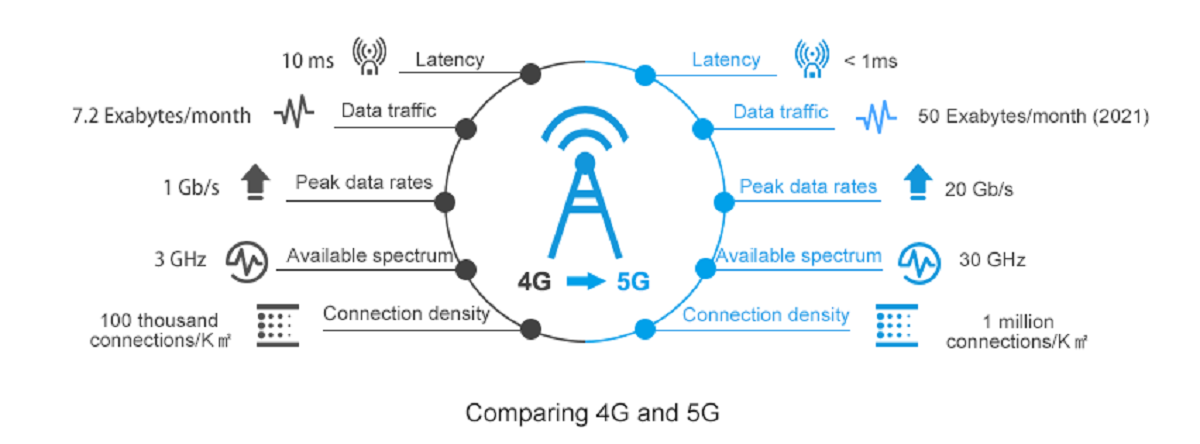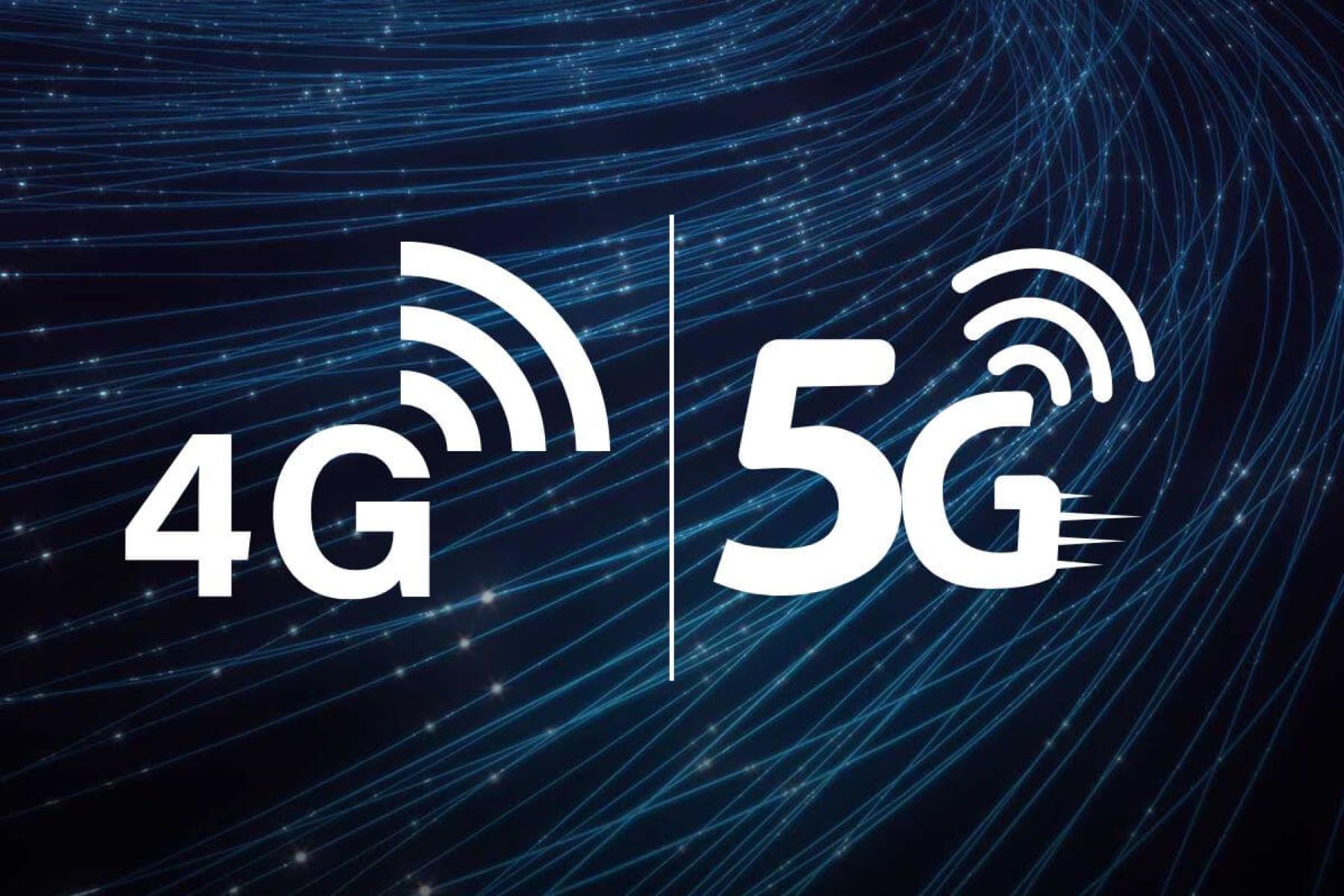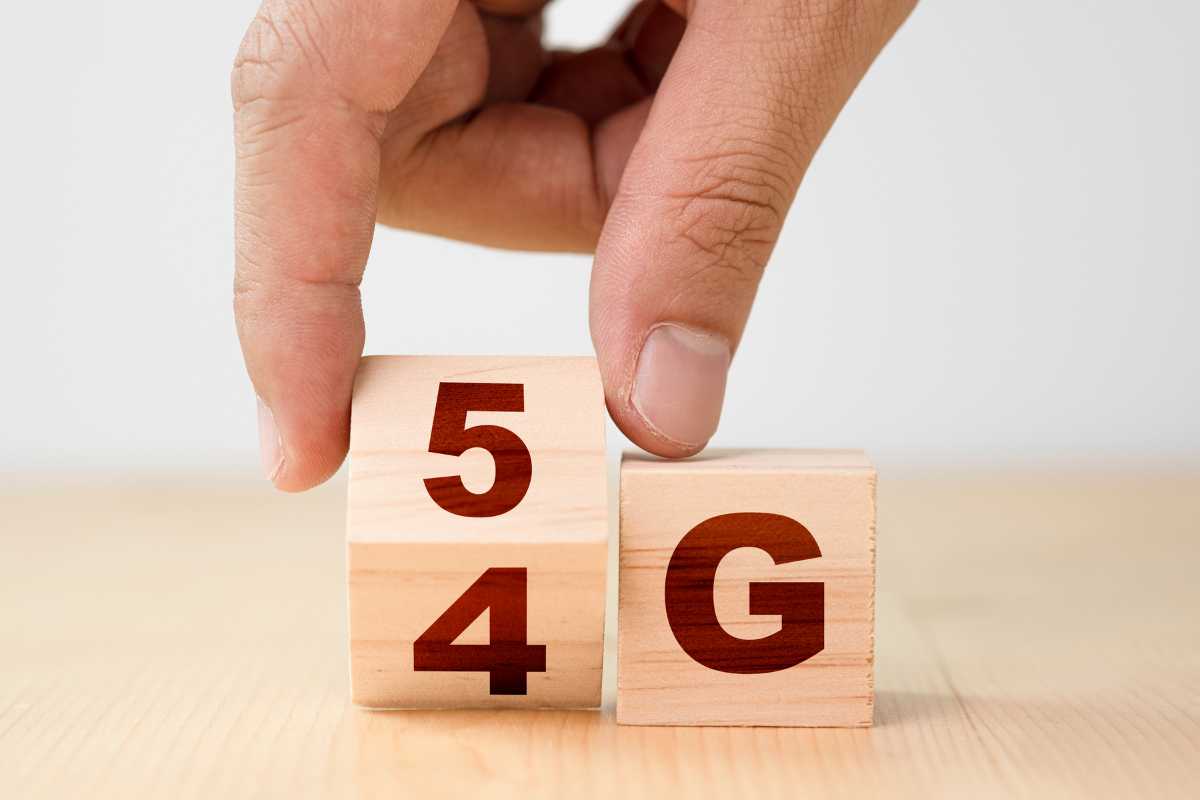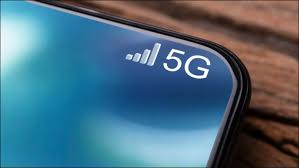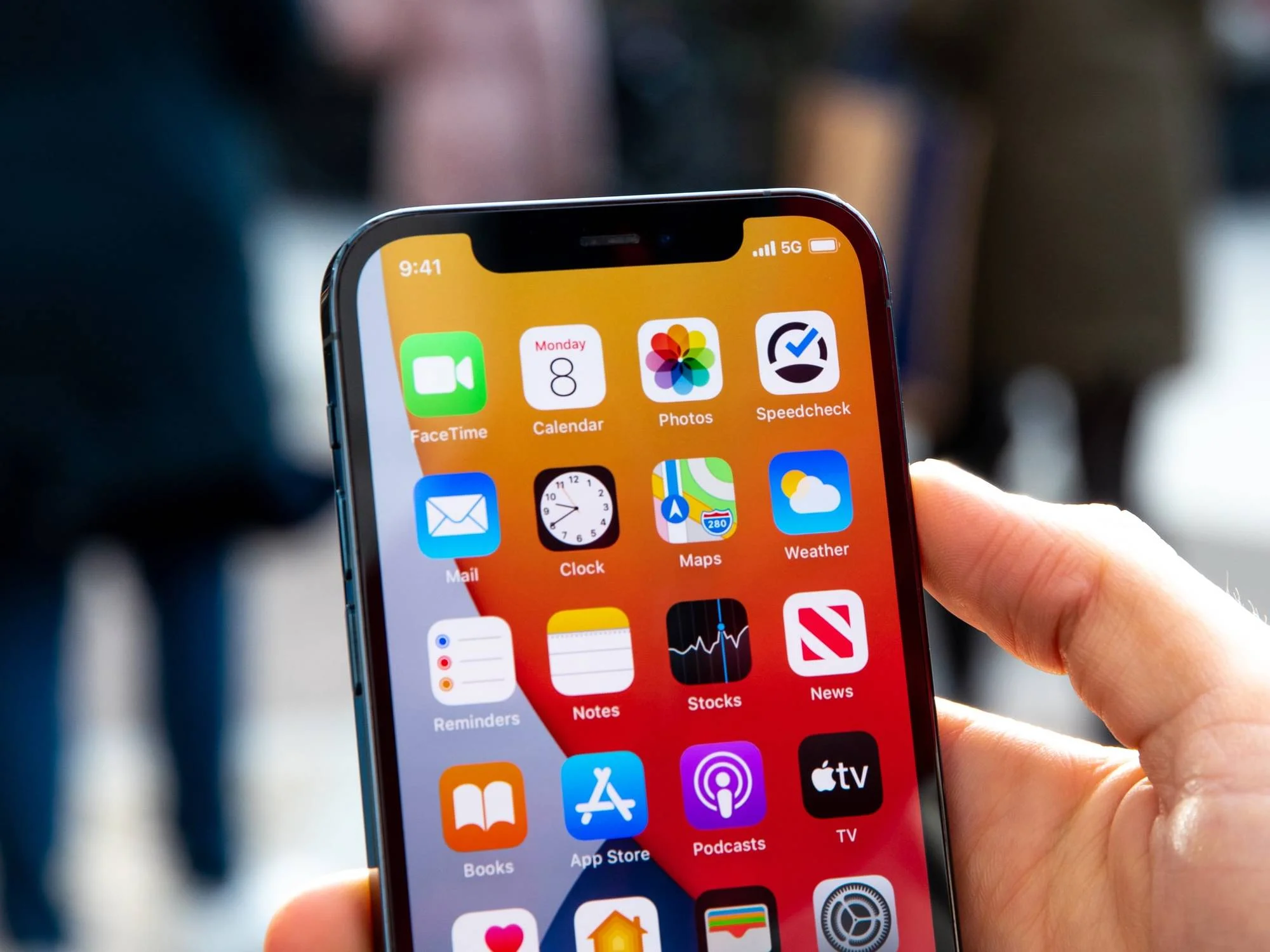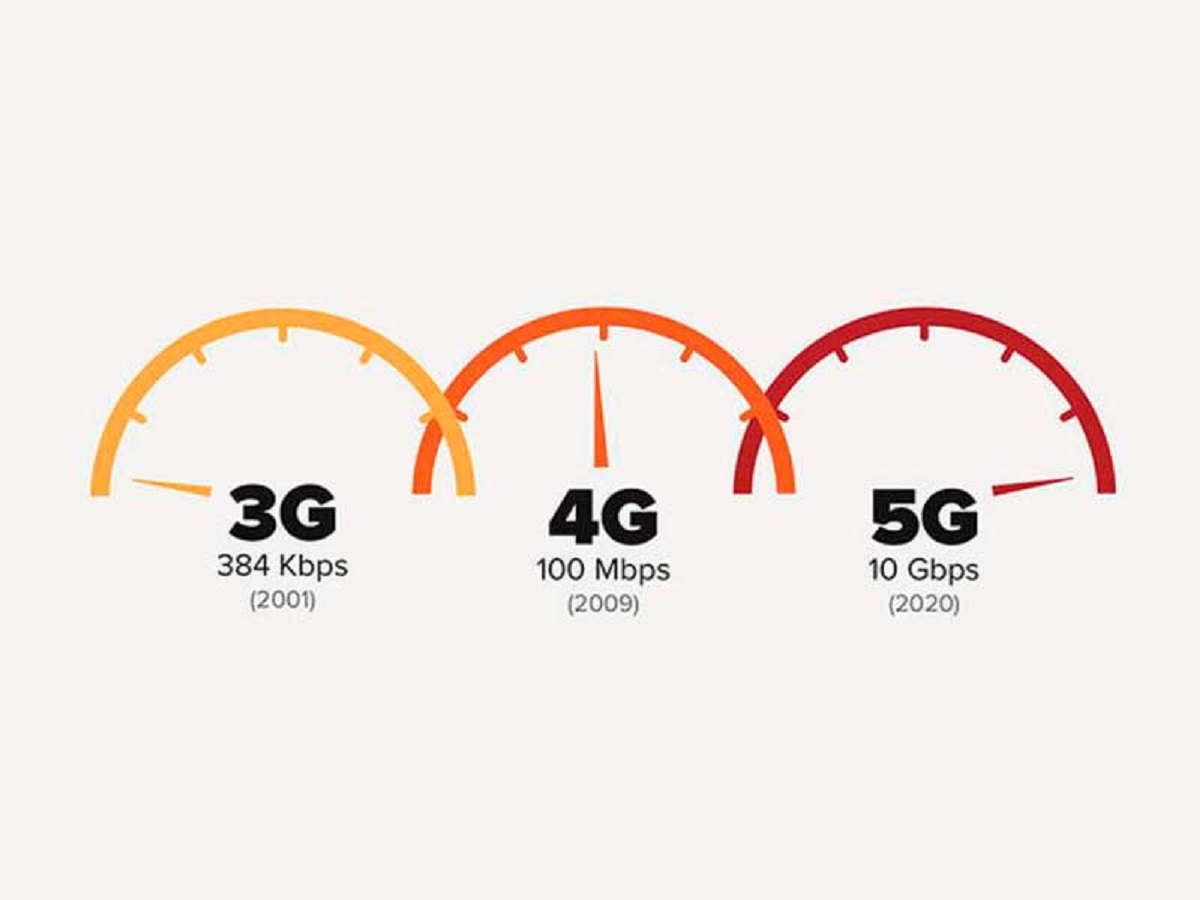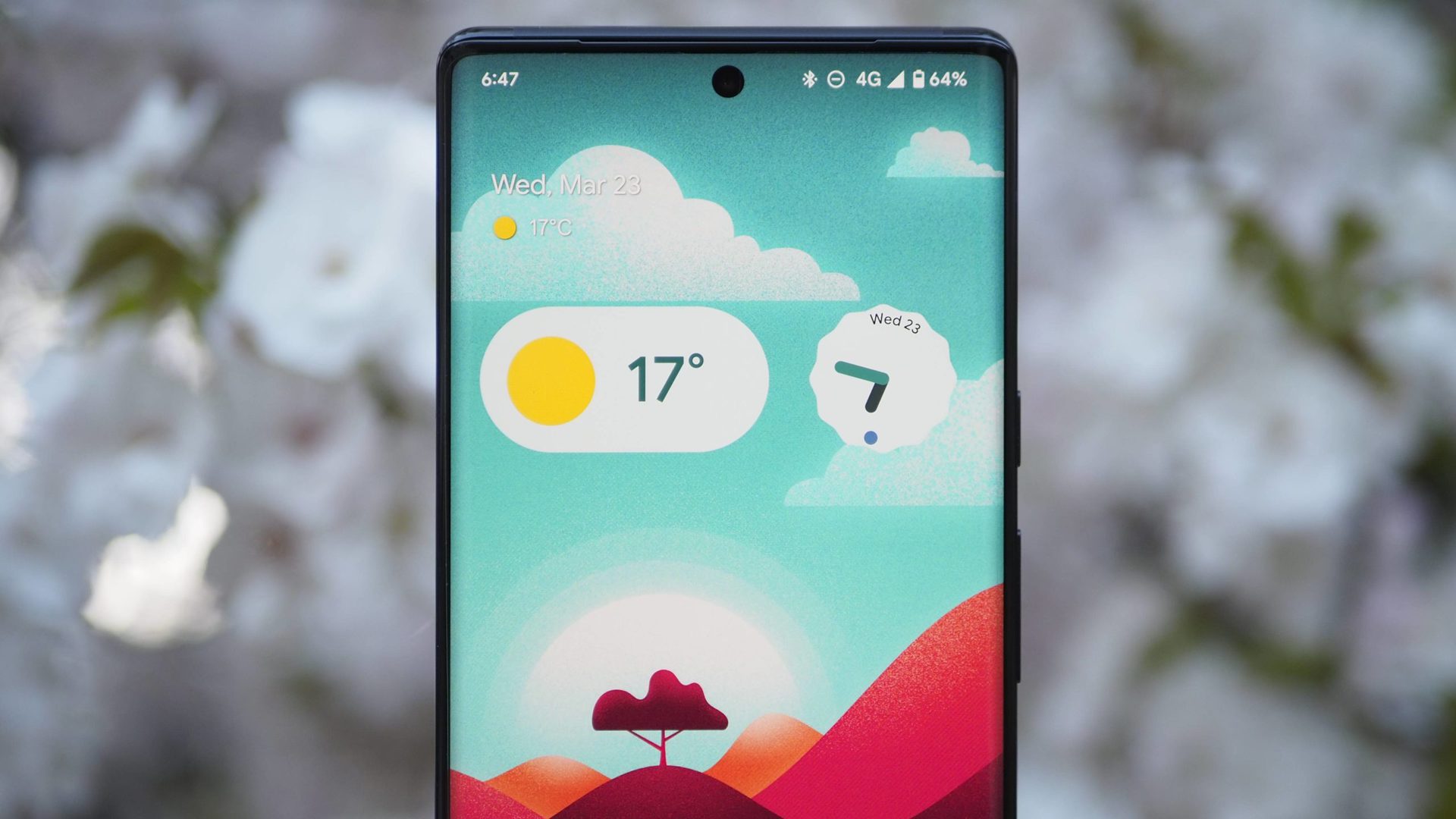Introduction
As technology continues to advance at an astonishing pace, the realm of mobile connectivity is no exception. With the introduction of 5G, the fifth generation of wireless technology, we are poised to experience a significant leap forward in terms of speed, capacity, and overall performance. But what exactly sets 5G apart from its predecessor, 4G? In this article, we will explore the key differences between 5G and 4G, shedding light on the advancements that make 5G the next frontier in wireless communication.
Before delving into the specifics, it’s important to understand the foundational differences between 5G and 4G. While 4G primarily focuses on delivering faster downloads and providing a more reliable internet connection on our smartphones, 5G aims to revolutionize the entire ecosystem of connected devices and services. It is designed to handle the exponential growth of data traffic, support billions of devices, and facilitate the seamless integration of emerging technologies like the Internet of Things (IoT), virtual reality, and autonomous vehicles.
One of the main distinguishing factors is the significant increase in speed and capacity that 5G brings to the table. While 4G networks can offer download speeds of up to a few hundred megabits per second, 5G has the potential to achieve peak speeds in the gigabit range. This massive leap in speed opens up a world of possibilities, enabling faster downloads, smoother streaming, and real-time interactions on a level we haven’t experienced before.
Apart from speed, another critical aspect where 5G triumphs over 4G is latency. Latency refers to the time it takes for data to travel between devices. 4G networks typically have a latency of around 50 milliseconds, whereas 5G promises to slash that figure down to a mere single-digit milliseconds. This ultra-low latency will revolutionize applications such as online gaming, remote surgery, and autonomous driving, where time-sensitive interactions are crucial.
Furthermore, 5G significantly improves on connection density. Unlike 4G, which struggles to maintain stable connections in crowded areas with high device concentrations, 5G can handle up to a million devices per square kilometer. This enhanced connection density ensures a seamless user experience even in densely populated areas, stadiums, and event venues.
Speed and Capacity
When it comes to speed and capacity, 5G is a game-changer. While 4G networks have been impressive in their ability to deliver fast download speeds, 5G takes it to a whole new level. With 5G, users can expect peak download speeds in the gigabit per second range, allowing for rapid data downloads and seamless streaming of high-definition content.
The increased speed of 5G is made possible by a combination of advancements in network architecture and the use of higher frequency bands. 5G networks utilize higher frequency bands, referred to as millimeter waves, which have significantly more capacity than the lower frequency bands used by 4G networks. This abundance of capacity allows for larger amounts of data to be transmitted simultaneously, resulting in faster speeds and reduced congestion.
Additionally, 5G networks employ a technology known as beamforming, which enables more efficient and focused transmission of data. Instead of broadcasting signals in all directions, beamforming allows 5G towers to direct signals specifically towards the intended recipient. This targeted approach reduces signal interference and enhances overall network performance, leading to faster and more reliable connections.
The increased speed and capacity of 5G not only benefit individual users but also have significant implications for various industries and technologies. For example, it opens up possibilities for real-time applications such as virtual reality (VR) and augmented reality (AR), where the seamless transmission of large amounts of data is crucial for providing immersive experiences. Virtual meetings and teleconferencing will also greatly benefit from the improved speed and capacity, allowing for high-quality video and audio communication.
Furthermore, the increased capacity of 5G networks enables the widespread adoption of the Internet of Things (IoT) technologies. With billions of connected devices expected to be in use in the near future, 5G networks have the capability to handle the massive influx of data generated by these devices. This means that smart homes, smart cities, and industrial automation systems will be able to operate more effectively, enhancing efficiency and convenience in various aspects of our lives.
Latency
Latency, the time it takes for data to travel between devices, is a crucial factor in determining the responsiveness of a network. While 4G networks typically have latency in the range of 50 milliseconds, 5G networks aim to reduce this significantly, achieving single-digit millisecond latency. This ultra-low latency opens up a world of possibilities, particularly in applications that require real-time interactions.
One of the key areas where low latency is essential is in online gaming. Gamers rely on split-second reactions and seamless communication with other players to have an immersive gaming experience. With 5G’s low latency, gamers can enjoy quick response times, reduced lag, and improved overall gameplay. Online multiplayer games could become even more competitive and engaging with 5G connectivity.
Another area where low latency is crucial is in mission-critical applications, such as remote surgery and autonomous vehicles. In remote surgery, doctors need to have precise control and real-time feedback during procedures, regardless of the physical distance between them and the patient. The low latency of 5G ensures that any movements or instructions can be transmitted instantly, minimizing the risk of delays or disruptions in the surgery.
Similarly, autonomous vehicles heavily rely on communication between vehicles, infrastructure, and other devices to operate safely and efficiently. The low latency of 5G enables faster exchange of information, facilitating quick decision-making and enhancing the overall safety of self-driving cars. Real-time communication between vehicles will allow them to react instantly to changes in the environment, leading to smoother traffic flow and fewer accidents.
Apart from specific applications, the low latency of 5G also enhances everyday tasks and experiences. Activities such as video calling, streaming live events, and using augmented reality (AR) applications become more seamless and immersive with minimal delay between actions and responses. This can transform how we interact with technology and enable new possibilities for remote collaboration, entertainment, and education.
Overall, the low latency offered by 5G networks revolutionizes how we perceive and utilize mobile connectivity. It enables a near-instantaneous exchange of data, making real-time applications, gaming, remote surgery, and autonomous vehicles more practical and efficient. As 5G continues to roll out globally, we can expect a new era of connectivity with unprecedented levels of responsiveness and interactivity.
Connection Density
The concept of connection density refers to the number of devices that can be connected within a given area, and it plays a critical role in the functionality and performance of wireless networks. Traditional 4G networks have limitations when it comes to maintaining stable connections in crowded areas with high device concentrations. However, 5G networks are designed to handle the increasingly connected world we live in, supporting a significantly higher connection density.
With 5G, the potential for connection density is immense. It can support up to a million devices per square kilometer, which is a massive leap compared to the thousands of devices that 4G networks can handle. This ability to accommodate a high number of connected devices is particularly important in scenarios where large crowds gather, such as sporting events, concerts, or city centers.
The improved connection density of 5G networks results in a more seamless and consistent user experience, even in dense urban environments. It ensures that users can stay connected and enjoy reliable network connectivity, regardless of the number of devices in the area. This is especially significant in scenarios where multiple devices are simultaneously accessing bandwidth-intensive applications, such as streaming high-definition videos or using virtual reality (VR) headsets.
Another advantage of the increased connection density of 5G is its impact on the Internet of Things (IoT) ecosystem. With the exponential growth of IoT devices, which includes everything from smart home appliances to industrial sensors, the ability to connect and manage a large number of devices becomes crucial. 5G networks provide the necessary infrastructure to support the massive scale of IoT deployments, enabling seamless connectivity and efficient data exchange between devices.
In addition to supporting existing devices, the high connection density of 5G also opens up opportunities for new use cases. Industries such as logistics, transportation, and healthcare can benefit from the increased number of devices that can be connected within a given area. For example, logistics companies can track and manage a large fleet of vehicles and packages in real-time, leading to improved efficiency and accuracy.
Overall, the higher connection density of 5G networks signifies a significant step forward in the evolution of wireless communication. It enables reliable connections for a vast number of devices in crowded areas, enhances the functionality of IoT applications, and creates opportunities for innovative use cases in various industries. As the 5G infrastructure continues to expand, we can expect a more connected and seamlessly integrated world, with endless possibilities for innovation and productivity.
Energy Efficiency
As the demand for mobile connectivity continues to grow, so does the need for more energy-efficient solutions. Energy efficiency is a critical aspect of wireless networks, as it not only helps reduce operational costs but also has a positive environmental impact. In this regard, 5G networks offer significant improvements over 4G, making them more energy-efficient and environmentally friendly.
One of the key factors contributing to the energy efficiency of 5G is its ability to handle increased data traffic while consuming less power. 5G networks employ advanced technologies such as network slicing and beamforming, optimizing the allocation of resources and reducing energy consumption. These features allow 5G networks to dynamically adapt to the demand, directing resources only where they are needed, thus minimizing energy wastage.
Moreover, 5G networks are designed to be more power-efficient at the device level. 5G devices have better power management capabilities, enabling them to conserve energy during idle periods and operate more efficiently when transmitting or receiving data. This improved energy efficiency translates into longer battery life for devices, reducing the need for frequent charging and enhancing user convenience.
Another aspect that contributes to the energy efficiency of 5G is its ability to handle a larger number of connections per base station. By supporting a higher connection density, 5G networks can accommodate more devices without requiring the deployment of additional base stations. This leads to more efficient use of infrastructure and reduces the overall energy consumption of the network.
Furthermore, 5G networks facilitate the deployment of small cells, which are smaller base stations that can be strategically placed to provide coverage in high-demand areas. Compared to traditional macro cells, small cells consume less power as they cover smaller areas and serve a limited number of users. This targeted approach to network deployment improves energy efficiency by minimizing energy wastage and focusing resources where they are needed most.
By transitioning to 5G, operators can also benefit from the improved energy efficiency of the network infrastructure itself. Upgrading to more advanced and efficient equipment reduces the overall power consumption of the network, leading to lower operational costs and a smaller carbon footprint.
In summary, 5G networks offer significant advancements in energy efficiency compared to their 4G predecessors. Through technologies like network slicing, beamforming, and improved device power management, 5G networks can handle increased data traffic while consuming less power. The ability to support higher connection density and the deployment of small cells further contribute to energy efficiency. By embracing 5G technology, we can move towards a more sustainable and environmentally friendly future for wireless communication.
Coverage
Coverage is a crucial aspect of wireless networks, as it determines the availability and reach of mobile connectivity. While 4G networks have made significant strides in providing widespread coverage, 5G takes it a step further, aiming to extend connectivity to even more remote areas and deliver a seamless user experience in challenging environments.
One of the key advantages of 5G in terms of coverage is its ability to leverage a wider range of frequency bands. While 4G primarily operates in lower frequency bands, 5G networks utilize a combination of low, mid, and high-frequency bands. This enables 5G to provide coverage in a broader range of environments, including rural areas, urban centers, and indoor spaces.
The use of higher frequency bands also allows 5G to offer increased capacity and faster speeds. However, it’s important to note that higher frequency signals have shorter propagation distances and are more susceptible to obstructions, such as walls and buildings. To overcome this challenge, 5G networks employ advanced technologies, such as advanced antenna systems and small cells, to enhance coverage in densely populated areas and improve signal penetration through obstacles.
Moreover, 5G networks can leverage existing infrastructure, such as macro cell towers, to extend coverage and minimize the need for additional infrastructure deployment. By retrofitting and upgrading existing towers with 5G capabilities, operators can enhance coverage and bring the benefits of 5G to a wider population without significant infrastructure investment.
In addition to providing coverage in urban and rural areas, 5G networks aim to address specific use cases where traditional networks struggle to provide reliable connectivity. For example, 5G can improve coverage and capacity in indoor environments, such as shopping malls, airports, and stadiums, where high user density and signal attenuation pose challenges for 4G networks. By deploying small cells and distributed antenna systems, 5G networks can ensure seamless connectivity and improved user experiences in these environments.
Furthermore, 5G networks have the potential to extend coverage to remote and underserved areas through innovative solutions such as satellite connectivity and aerial platforms. These technologies can bridge the connectivity gap and bring high-speed internet access to areas where traditional infrastructure deployment is challenging or economically unfeasible.
Overall, 5G networks offer enhanced coverage compared to 4G, with the ability to provide connectivity in a wider range of environments and address challenging coverage scenarios. By leveraging a mix of frequency bands, advanced antenna systems, and innovative deployment strategies, 5G networks bring us closer to achieving ubiquitous and seamless connectivity for all.
Reliability and Availability
Reliability and availability are crucial factors when it comes to wireless communication. Users rely on their mobile devices for various tasks, ranging from basic communication to accessing critical information and services. 5G networks aim to provide enhanced reliability and availability compared to their 4G counterparts, ensuring a seamless user experience even in demanding situations.
One of the key aspects that contribute to the reliability of 5G networks is their ability to handle high capacity. With the exponential growth of data traffic, especially with emerging technologies like the Internet of Things (IoT) and autonomous vehicles, 5G networks are designed to handle the increasing demand without compromising on reliability or performance. The improved capacity ensures that users can enjoy uninterrupted connectivity and consistent service, even in areas with a high concentration of devices.
Furthermore, 5G networks incorporate advanced features like network slicing, which allows operators to allocate dedicated virtual networks for specific services or applications. This enables the prioritization of critical services, such as emergency communications or healthcare applications, ensuring their availability and reliability even in congested network conditions. Network slicing also provides enhanced security and isolation, preventing interference or disruptions between different services sharing the same network infrastructure.
Another factor that contributes to the reliability of 5G is the use of intelligent network management and self-healing capabilities. 5G networks are equipped with advanced analytics and automation, allowing for proactive monitoring, identification of potential issues, and quick resolution of network problems. Self-healing algorithms are employed to automatically detect and rectify faults, minimizing downtime and ensuring continuous connectivity.
In terms of availability, 5G networks aim to provide coverage in a wide range of environments, including rural areas and remote locations. By leveraging various spectrum frequencies and implementing innovative network deployment strategies, 5G networks can extend coverage to areas that were previously underserved. This enhanced availability ensures that users can access reliable connectivity, regardless of their location.
5G networks also bring advancements in network handover and seamless mobility. The transition between different cells and network types, such as switching between Wi-Fi and cellular networks, is smoother and more reliable with 5G. This enables uninterrupted connectivity during movement, even at high speeds, ensuring a seamless user experience for applications like video streaming or voice calls.
Overall, 5G networks offer improved reliability and availability compared to 4G, thanks to their ability to handle high capacity, innovative network management features, and expanded coverage. The advancements in reliability and availability in 5G networks pave the way for transformative applications and services, ensuring that users can rely on their mobile connectivity for critical tasks and enjoy uninterrupted connectivity in various scenarios.
Use Cases and Applications
The advent of 5G technology opens up a plethora of exciting use cases and applications, transforming the way we live, work, and interact with technology. With its superior speed, low latency, high connection density, and reliability, 5G enables a wide range of innovative services and experiences that were previously unimaginable. Here are some of the key use cases and applications that 5G facilitates:
1. Internet of Things (IoT): 5G networks are designed to support massive machine-to-machine communication, making them an essential enabler for the Internet of Things. With the ability to handle a vast number of IoT devices simultaneously, 5G opens up possibilities for smart homes, smart cities, industrial automation, and connected healthcare systems. It allows for seamless connectivity and efficient data exchange between devices, leading to improved efficiency, automation, and new business opportunities.
2. Autonomous Vehicles: 5G plays a pivotal role in the development and deployment of autonomous vehicles. The low latency and high reliability of 5G networks enable real-time communication between vehicles and infrastructure, facilitating safe and efficient transportation. With 5G, autonomous vehicles can exchange information, navigate complex traffic conditions, and make split-second decisions, revolutionizing the future of transportation and mobility.
3. Virtual Reality (VR) and Augmented Reality (AR): 5G’s high bandwidth and low latency make it a perfect match for immersive technologies like VR and AR. With the increased speed and capacity of 5G, users can enjoy ultra-high-definition VR experiences and real-time AR overlays seamlessly. This opens up possibilities for immersive gaming, virtual meetings, training simulations, and architectural visualization, among other applications.
4. Remote Healthcare: 5G’s low latency and reliable connections have transformative implications for remote healthcare services. It enables real-time communication and remote monitoring between doctors and patients, regardless of their physical distance. Remote surgeries, telemedicine, and remote patient monitoring become more feasible with the enhanced capabilities of 5G networks, leading to improved access to healthcare services, especially in underserved areas.
5. Smart Cities: 5G serves as a catalyst for the development of smart cities by connecting various infrastructure elements and enhancing efficiencies. From smart traffic management and intelligent street lighting to environmental monitoring and waste management, 5G enables seamless communication between devices and systems, leading to improved resource utilization, energy efficiency, and overall quality of life for urban dwellers.
6. Enhanced Mobile Experiences: With the speed and capacity of 5G networks, mobile experiences are elevated to a whole new level. Users can enjoy ultra-fast downloads, buffer-free streaming, and seamless video calls, even in crowded environments. The low latency of 5G enables smooth online gaming, real-time video collaboration, and interactive live events, making mobile experiences more immersive and enjoyable.
These are just a few examples of the myriad of use cases and applications that 5G makes possible. As 5G networks continue to evolve and expand, we can expect even more innovative and transformative services that will reshape industries, enhance daily life experiences, and drive the digital transformation of our society.
Conclusion
5G represents a significant leap forward in wireless technology, offering unparalleled speed, capacity, low latency, and reliability. Its advancements open up a world of possibilities, transforming industries, revolutionizing connectivity, and enhancing the user experience across various applications and use cases.
With its lightning-fast speeds, 5G enables faster downloads, seamless streaming of high-definition content, and real-time interactions. The low latency of 5G makes applications like online gaming, remote surgery, and autonomous driving more practical and reliable. The increased connection density of 5G ensures stable connections even in crowded areas, while its energy efficiency helps reduce operational costs and minimize environmental impact.
Moreover, 5G brings significant improvements in coverage, extending connectivity to rural areas, challenging environments, and underserved populations. Its reliability and availability make it a critical enabler for emerging technologies like the Internet of Things, autonomous vehicles, virtual reality, and remote healthcare.
As 5G continues to roll out globally, we can expect transformative changes in various sectors, including smart cities, transportation, healthcare, and entertainment. The integration of 5G will drive innovation, foster economic growth, and provide new opportunities for businesses and individuals alike.
However, it’s important to note that the adoption of 5G will require extensive infrastructure upgrades and investments. Network operators, governments, and industry stakeholders must work together to ensure the seamless deployment and coverage of 5G networks, addressing challenges such as signal propagation, spectrum availability, and regulatory frameworks.
In conclusion, 5G represents not just an evolution but a revolution in wireless technology. Its enhanced speed, capacity, low latency, and reliability pave the way for transformative applications and seamless connectivity. With a promising future ahead, 5G is set to shape our connected world and unlock new possibilities for innovation, productivity, and digital transformation.







